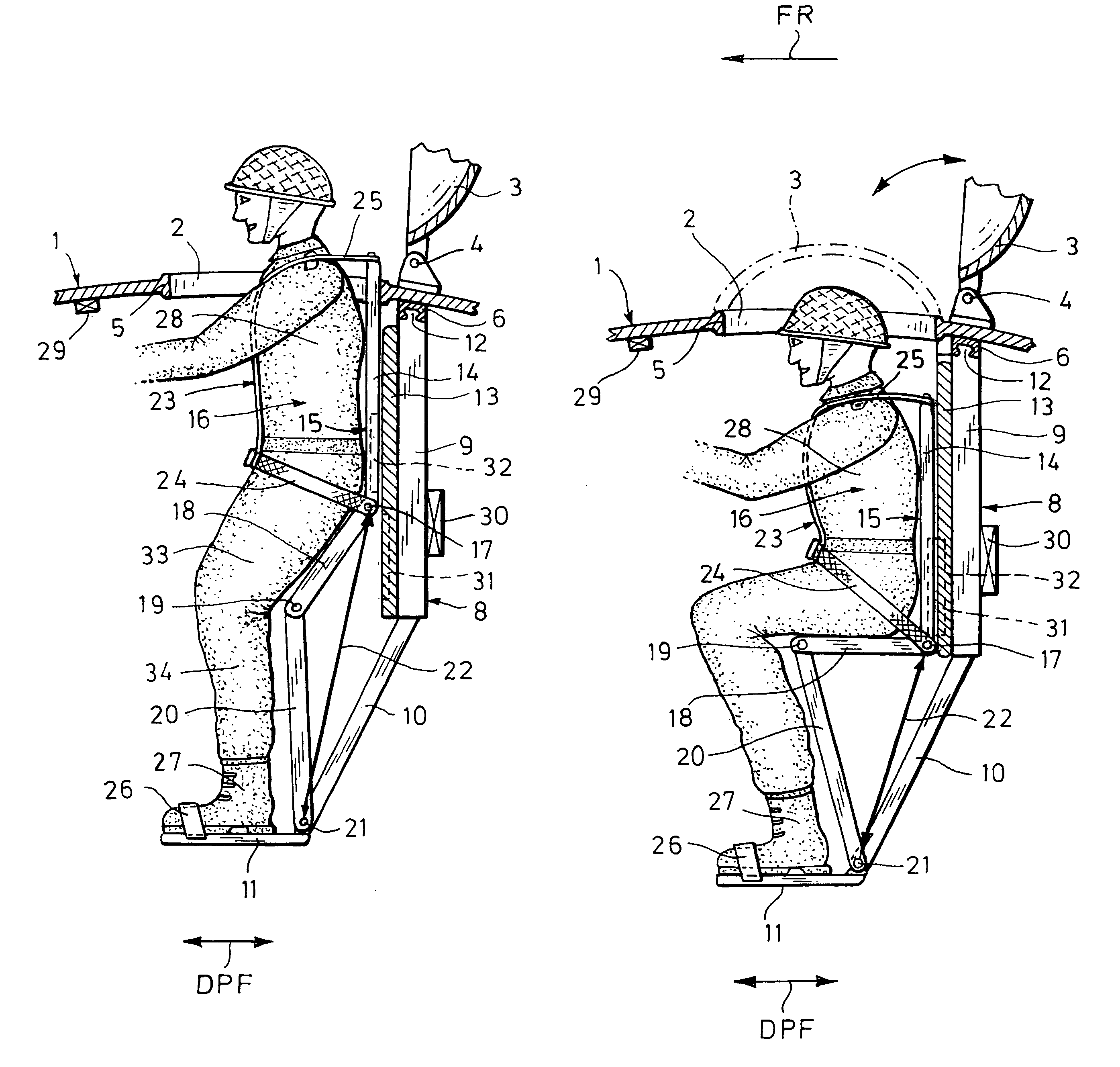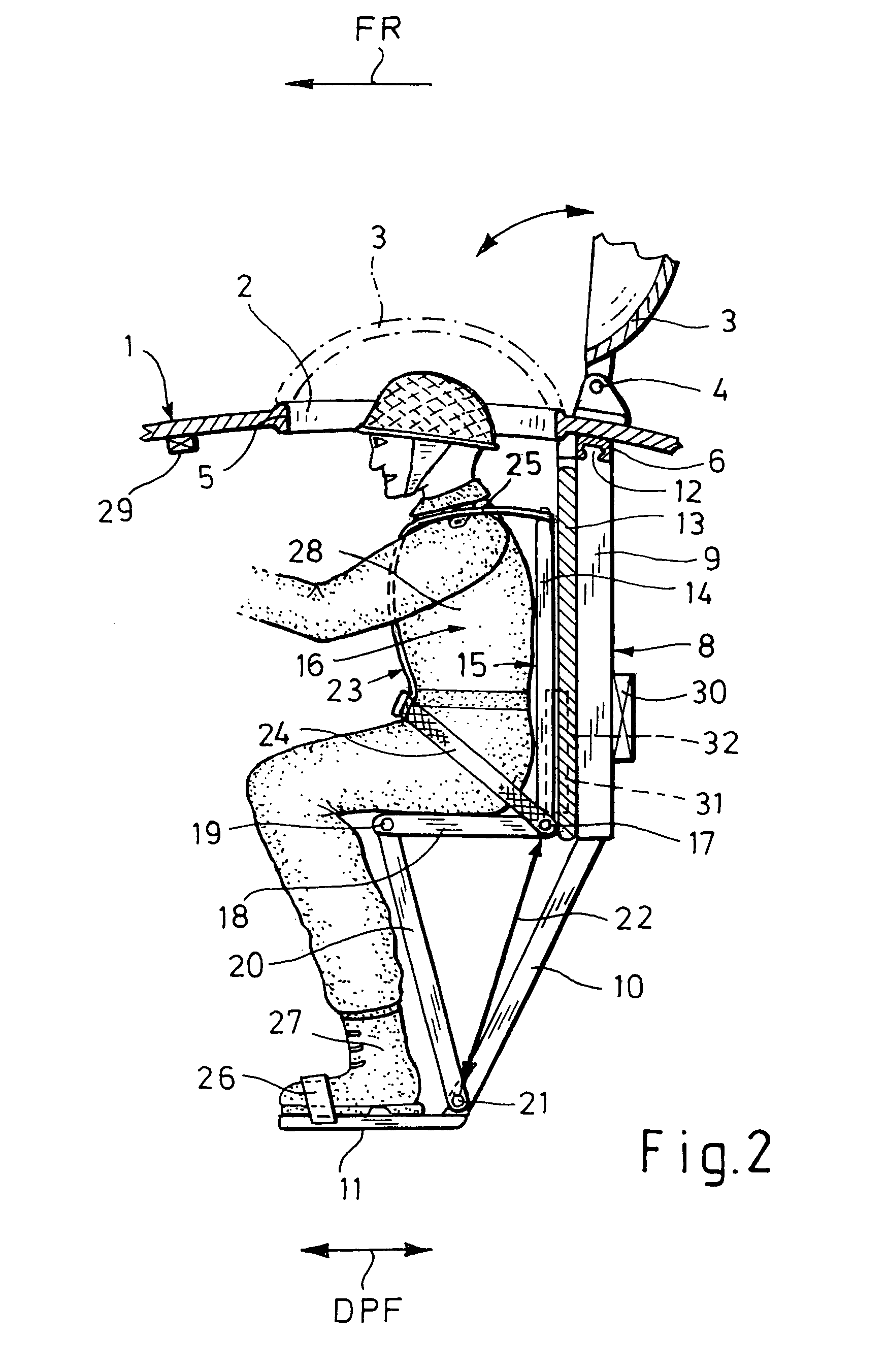Apparatus for positioning an occupant of a vehicle
a technology for positioning vehicles and occupants, applied in the direction of seat furniture, vehicle safety belts, armoured vehicles, etc., can solve the problems of commanding officer being hurled out of the vehicle or even crushed, vehicle tilting, transmission of strong shock wave, etc., and achieve the effect of improving the balance of the occupan
- Summary
- Abstract
- Description
- Claims
- Application Information
AI Technical Summary
Benefits of technology
Problems solved by technology
Method used
Image
Examples
Embodiment Construction
[0034]Throughout all the Figures, same or corresponding elements are generally indicated by same reference numerals. These depicted embodiments are to be understood as illustrative of the invention and not as limiting in any way. It should also be understood that the drawings are not necessarily to scale and that the embodiments are sometimes illustrated by graphic symbols, phantom lines, diagrammatic representations and fragmentary views. In certain instances, details which are not necessary for an understanding of the present invention or which render other details difficult to perceive may have been omitted.
[0035]Turning now to the drawing, and in particular to FIG. 1, there is shown a schematic vertical section of a positioning apparatus according to the present invention for use by an occupant in an exemplary armored vehicle, generally indicated by reference numeral 1 and shown here only by those parts that are necessary for the understanding of the invention. The armored vehic...
PUM
 Login to View More
Login to View More Abstract
Description
Claims
Application Information
 Login to View More
Login to View More - R&D
- Intellectual Property
- Life Sciences
- Materials
- Tech Scout
- Unparalleled Data Quality
- Higher Quality Content
- 60% Fewer Hallucinations
Browse by: Latest US Patents, China's latest patents, Technical Efficacy Thesaurus, Application Domain, Technology Topic, Popular Technical Reports.
© 2025 PatSnap. All rights reserved.Legal|Privacy policy|Modern Slavery Act Transparency Statement|Sitemap|About US| Contact US: help@patsnap.com



